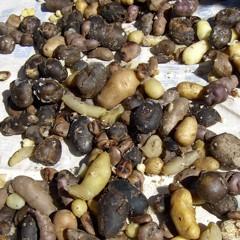
For whatever reason—global warming seems to be one—Bolivia’s Chacaltaya glacier, whose runoff provided water for the contiguous cities of La Paz and El Alto for centuries, is now gone. Glaciers reconstitute themselves, if at all, outside the span of human time: we will not see so much ice shimmer again above the harsh brown altiplano, the highland plateau where two thirds of all Bolivians live. Other glaciers in the Bolivian Andes—like the Illimani, so beautiful to look at—are also melting, and in all likelihood will disappear before 2040.
I hadn’t really understood the water poverty of the altiplano until a few years ago, at a celebration sponsored by several farming villages some twenty miles from Lake Titicaca on the border between Bolivia and Peru. By Bolivian standards this was a privileged community, located not far from both a major thoroughfare and an important water source. The festivity was a big event; a rededication of one of those imposing churches the Spanish missionary orders used to build in the middle of nowhere. All around it, the adobe houses and the earth were the same dun color, and against this background the village elders stood out in their magnificent black robes, adorned in scarlet and with flashes of silver.
Soon the midday meal was served, and only a city tourist like me could have doubted that it was a magnificent spread: proudly, the campesinos rolled out two strips of black plastic on the ground, and then emptied on them many sacks of cooked potatoes of every color, size and taste: little potatoes left to freeze underground in the winter, larger blackish potatoes left to freeze in the streams, pink and yellow and white freshly-harvested boiled potatoes. Coarse salt was provided as an accompaniment, along with small amounts of a venomously hot chile sauce and quite a bit of white cheese that tasted of equal parts salt and curd.
This, for campesinos in what was until recently the poorest country in South America, was a banquet, produced by scratching the earth with sticks and hoes and guiding the available water to each potato plant by means of backbreaking labor. Life seemed so desperately hard in the shadow of that church. The urgent question now is how a population with almost no water will deal with even less water when the ice has finished melting.

Although most Bolivians are still at least as poor as the villagers at the feast, their country is no longer the poorest in South America because seemingly every corner of its territory hides untold mineral wealth beneath a stingy surface. First there was silver. After the mountains that produced it were gutted into swiss cheese, tin became a major export. Now a mountain made of iron ore is scheduled to be strip-mined by a multinational corporation headquartered in India, while on the altiplano a US concern is getting ready to mine a previously untouched mountain made of silver and zinc.
One of the most spectacular landscapes on earth, the surreal salt flats of Uyuni, will be mined extensively for lithium, of which Bolivia has the second largest deposits in the world. Most importantly, in his first two years in power Evo Morales nationalized the country’s enormous reserves of natural gas, and profitable contracts were negotiated with South American and US companies, among others, for the exploitation and sale of the fuel, which is deposited underground in the subamazonian eastern half of the country.
So the country has become a little less poor, and the population of Bolivia is only about ten million, of which approximately two-thirds live on the parched altiplano. But all the money in the world couldn’t buy the water needed to supply the rural and urban populations of the highlands. Water is already an explosive political issue; in the year 2000 a “water war” was fought over the privatization of water distribution in Cochabamba province. The “war” turned out to be the first battle in a period of popular turmoil that culminated in Morales’s 2006 victory. During those years there were five presidents, two of whom were overthrown in popular revolts; dozens of people were killed; and even in areas not involved in the conflict, roads were blocked for weeks on end and commerce was virtually paralyzed. Perhaps worst of all, old tensions were exacerbated almost to the point of civil war between the impoverished altiplano and the tropical east—which in addition to natural gas, has water in abundance, the iron ore mountain of El Mutún, and a prosperous city, Santa Cruz, where most of the country’s self-described white people live.
Whatever else one may think of Evo Morales, that civil war has not erupted. He inherited a country in which no president in ten years had lasted longer than three, and has not only served a full term but been reelected to another by a comfortable majority, and with no uprising by his sworn enemies in Santa Cruz. The government has set up a National Program of Adaptation to Climate Change, which is supposed to optimize water use and oversee its rationing in the immediate future. Morales has the political leeway of the freshly-reelected; a gas-fuelled economic boomlet; deep-rooted support among the indigenous population, a few significant social programs; a less yammering style than the man he appears to idolize, Hugo Chávez; and not nearly enough time. There are unsettled conflicts not only in Santa Cruz but closer to home in El Alto, whose million-plus inhabitants also went to “war” over water issues during the years of conflict and who suffer perhaps more than anyone from the current drought. Like its mineral wealth, political instability is always just under the surface in Bolivia, and it’s hard to see how the loss of a glacier there can be prevented from turning into a social meltdown.
Advertisement


